Stitches, seams and dreams
A transformation from plain to plush in the palm of my hand
Hello, I'm Josefin, a spinner of wool and crafter of words. In this space I practice being brave with my words to mold them into beauty. If you enjoy evocative writing about the little things in a big world, this space is for you. Bring your favourite tea mug and come sit beside me.
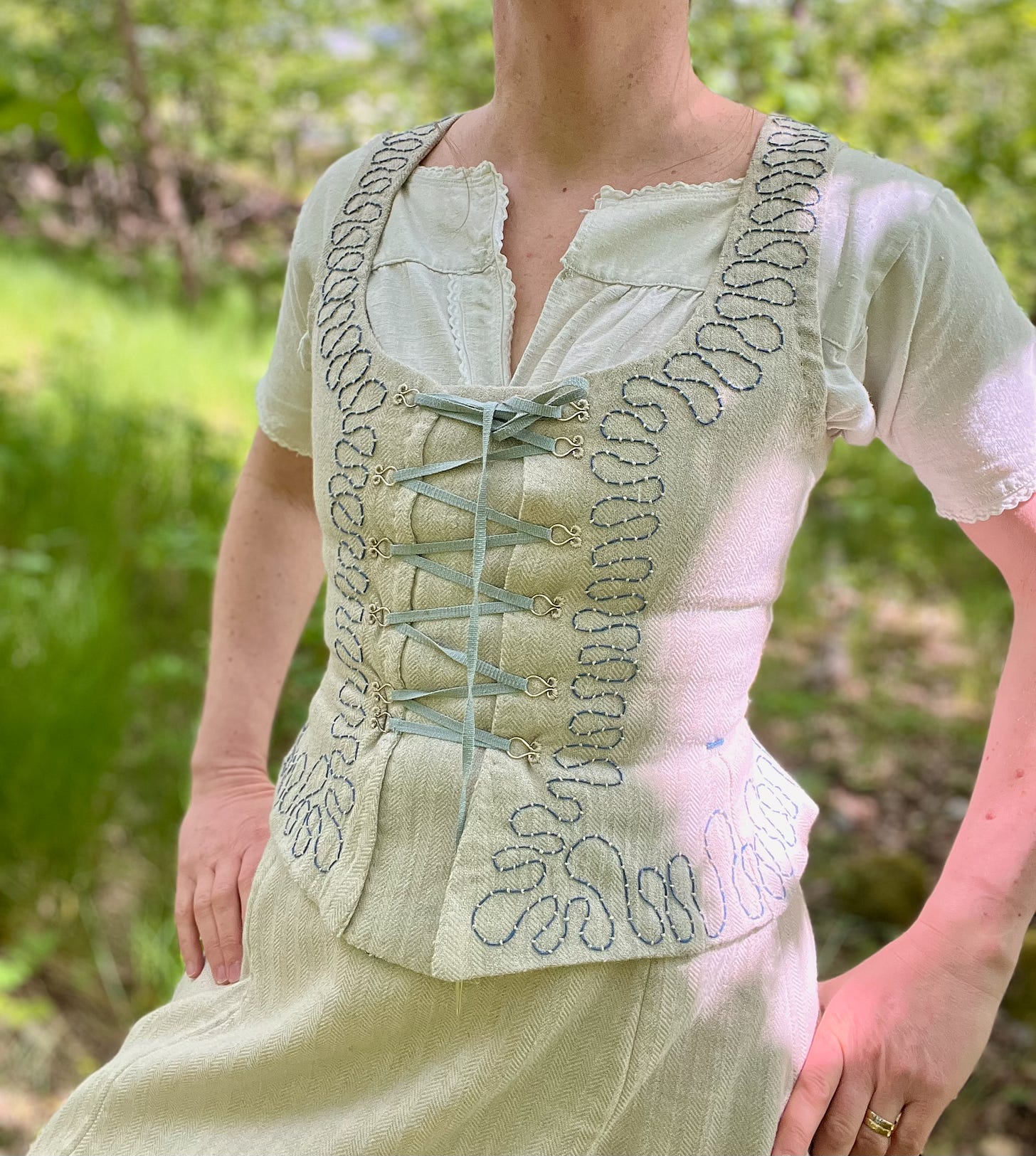
Turquoise is the colour of the thread I slide through the eye of the needle. With my main fabric1 rolled out and straightened on the wooden floor and the paper pattern pieces pinned to it, I mark the seamlines with the thread. Up and down the layers of sand coloured wool/linen twill, in loose tailor tacks.
I don’t pull the thread tight, but leave a squirming loop for every stitch, a trail of tousles. They remind me of hedgerows across a field and I smile at the fabric landscape.
I move on to the lining2 – a century-old tabby in bleached handspun Austrian linen. A treasure, no doubt. It's the first time I use the tailor tacks and I enjoy the slow efficiency of physical markings. I don't think I will go back to the much quicker chalking that I tend to rush past and regret later. This is my thing now. The reward of my journey around the edges of the pattern comes after I have cut the garment pieces. I separate the upper and lower layers as much as the loops allow and cut the threads that are now stretched between the fabrics. The result is two perfectly mirrored garment pieces with the seamlines neatly marked with turquoise bite-sized stitches.
Next up is a brightly pink sewing thread. I can't remember what I used it for when I bought it. It must have been my colour decades ago, but isn’t anymore. I match main fabric and lining corner to corner, curve to curve. I slide the needle through in stitches short enough to keep the pieces together, yet long enough to pull out when I don't need them anymore. Six main fabric/lining pairs with pink thread running across the surfaces, holding them loosely together, inch-long turquoise snippets framing them.
Reaching for an olive thread to mark a detail I realize I have colour coded my basting stitches for different purposes. I have returned to this visual system of nice and orderly and good ever since I started colour-coding diary entries growing up – red ink for birthdays, blue for homework, black for tests, and green for everyday notes. I still do it on my iCal, only with different categories.
With the three colours brightly shining against the muted fabric, I'm ready for the next layer of building my garment. I press the neckline, and with a newly waxed linen thread I push the needle through the fabric. I'm using a hybrid stitch this time, a slanted, half-basting, half-running stitch to shape the curves and to strengthen the outer edge of the garment. I don't pull the needle through to the right side of the fabric, though. Instead I catch only the top half of it to make as little stitch noise on the front of the garment as possible. It works and I continue the construction by whipstitching the pressed lining along the main fabric edge. To avoid puckering I finish by topstitching the edges. This time with a spaced backstitch with only tiny dots showing on the front of the main fabric. The triple-seam construction makes the curves strong, solid, and reliable.
I have just come home from the first of two weekends of a course in how to sew a bodice. Some of the students want to make their bodices for reenactment and historical correctness, others for folk costumes and geographical belonging.
I make mine just for me, and for having the making of a bodice in historical techniques in my hands.
We have copied the 18th century generic bodice pattern, made toiles and fitted them, adjusted and refitted. We have learned the stitches and practiced them on mini bodices left open and peekable to understand the architecture of them.
When I continue my journey through the bodice back home, I move on to the side seams. Oh, the side seams! I use one brutal seam – the English stitch – to secure the eight layers of fabric in the side and shoulder seams. With the seam allowances pressed and folded and the main fabrics sandwiched between the lining pieces, I pierce the bottom six layers diagonally, turn, and move back up through the top six. Down the sides in a dancing figure eight, pulling tight between each stitch. Wild and merciless, strong and efficient. With the side seams in place the once flat fabric has turned into a three-dimensional structure that fits and supports me perfectly.
After having attached the rings3 for the lacing4 I sew the last construction seam, the button-hole bar stitch. Tight and plentiful blanket stitches around a three-threaded bar to strengthen the spot where the fitted and flaring parts of the bodice abruptly meet.

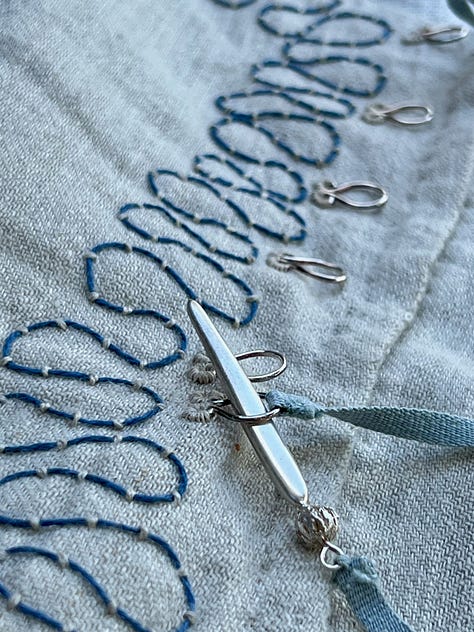

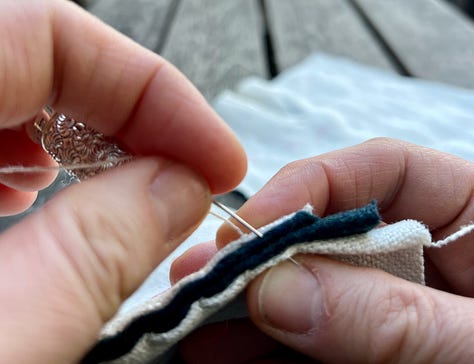


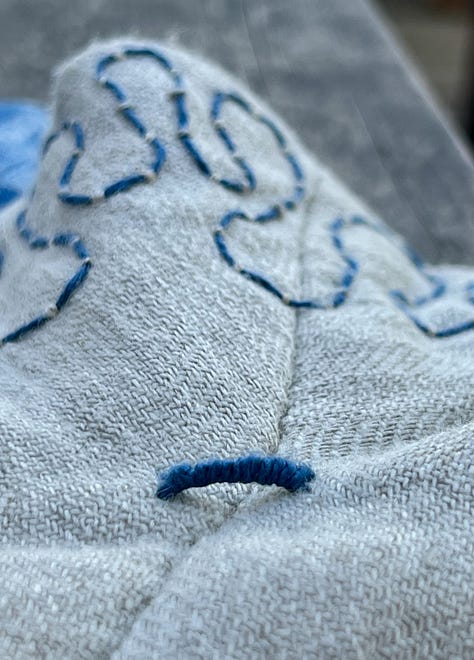
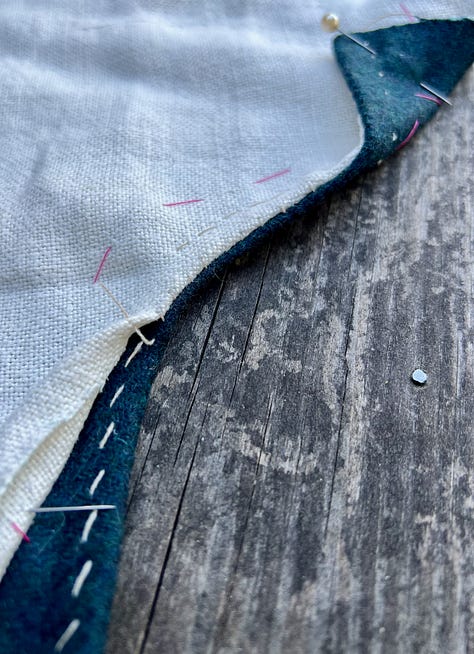
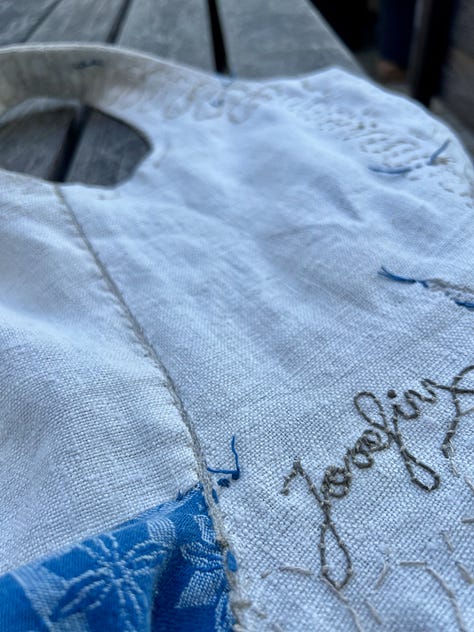
The whole idea with the bodice started with an embroidery stitch, or a dream of one, years ago. A simple thread laid on the fabric, another one securing it in a couching stitch. With the construction of the bodice finished I have a whole landscape in front of me to paint with my stitch of choice. Embroidery can demand precise placements and skilled executions, but for me it usually ends up wonky in one way or another. With this stitch, though, I'm free to lay the thread wherever it wants to go. I place it onto the fabric in an undulating pattern and secure it with the other thread.
With an open mind I pave my way along neckline, front and bottom. Bulges and straits to the whims and wishes of the thread. Occasionally my embellishment seam meets the construction stitches. I let them get acquainted, like dogs on the winding lanes in the park.
Thread and fabric, beeswax, needle, a few notions and the intelligence of my hands. This is all I need to turn a flat and floppy fabric into a structured garment that will forever capture the process of making it.
From the Berta’s flax guild.
Also from the Berta’s flax guild.
Made by Marianne Hellman.
My handspun silk, hand dyed with my homegrown indigo.






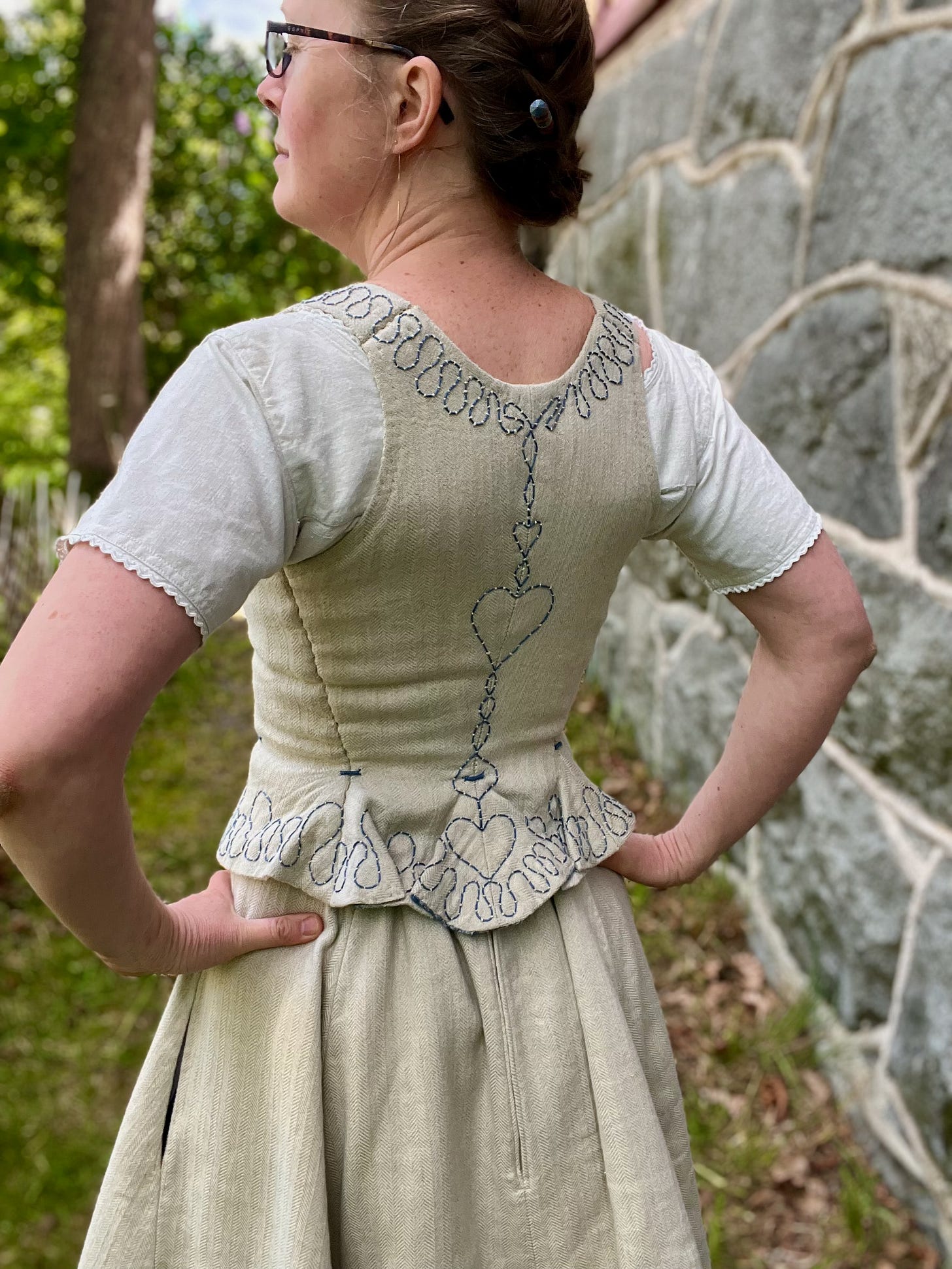

Josefin I loved this so much. Your work is art. Oh my goodness! I love the thought of learning to do this just to have the art of doing it “in your hands.”
The precision and beauty in every stitch is utterly stunning. This was fascinating to read. I am in awe. 🩵